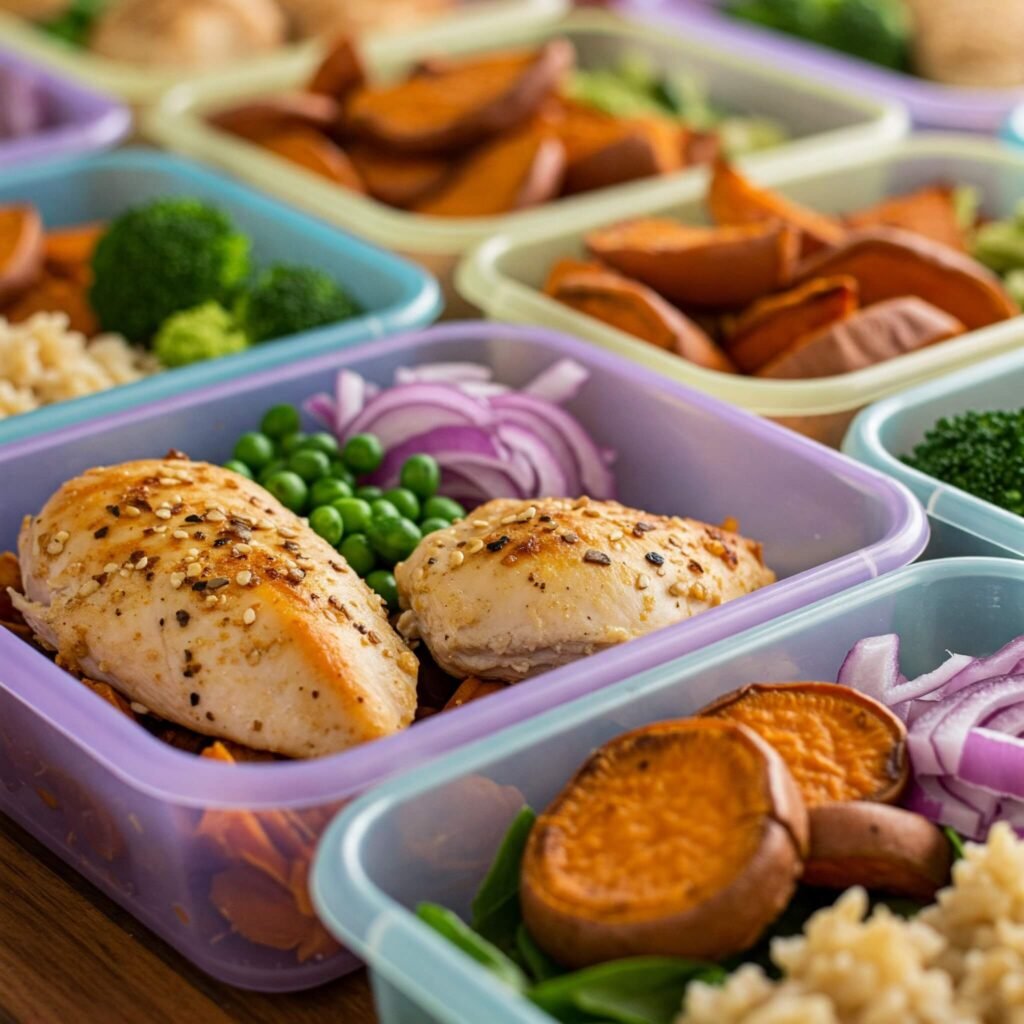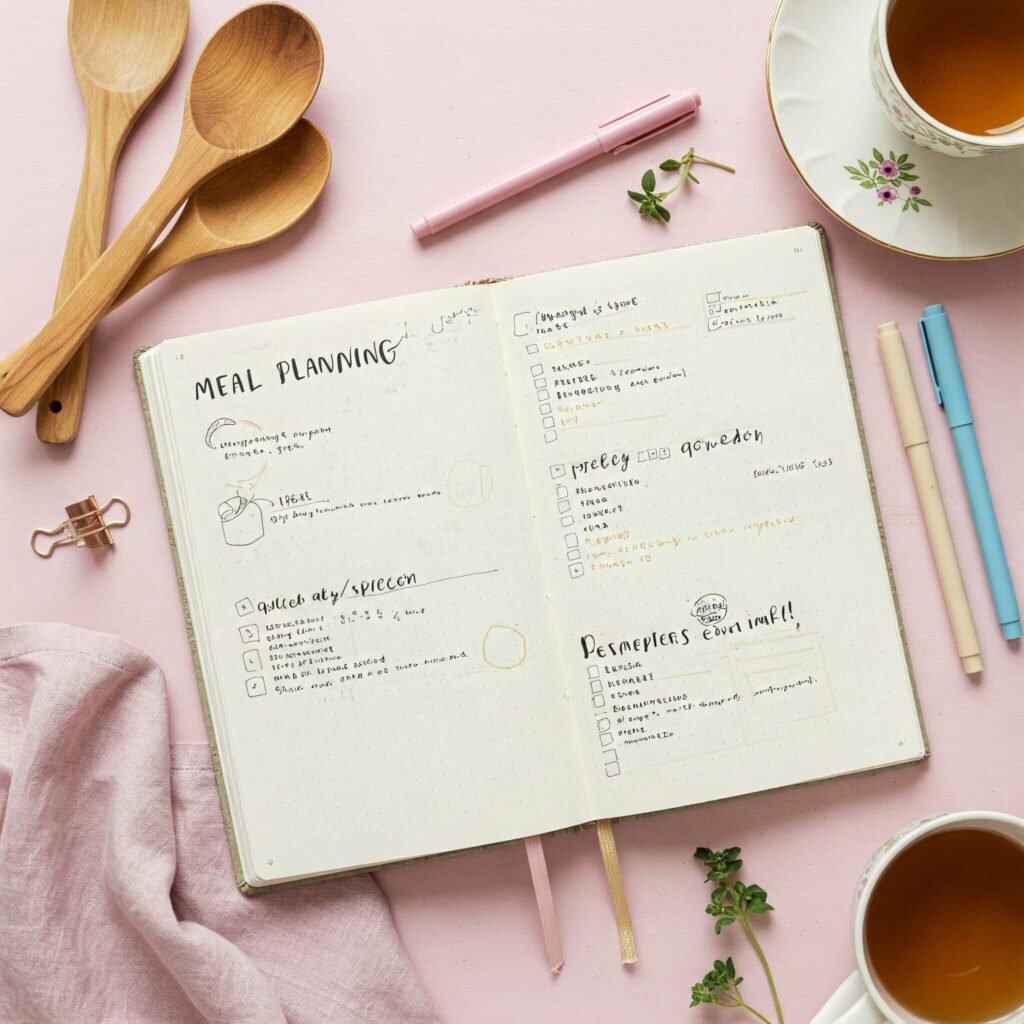Meal planning for weight loss transforms the journey to a healthier you by helping you make smarter food choices. By organizing meals ahead of time, you can manage portions, prioritize nutrition, and resist impulsive eating. In this guide, we’ll explore practical strategies, backed by expert insights, to ensure you stay on track and achieve your weight loss goals.
Why Meal Planning is Essential for Weight Loss
Meal planning for weight loss goes beyond choosing what to eat—it creates a sustainable framework for success. For instance, a 2017 study in the International Journal of Behavioral Nutrition and Physical Activity found that meal planners were more likely to sustain weight loss over time source. Consequently, adopting this habit can yield lasting results.
Key Benefits of Meal Planning for Weight Loss
- Saves Time: Preparing meals in advance reduces daily cooking stress.
- Controls Portions: Pre-portioned dishes prevent overeating.
- Curbs Cravings: Nutritious meals keep you satisfied, reducing unhealthy snacking.
- Saves Money: Buying ingredients in bulk lowers grocery expenses.

How to Begin Meal Planning for Weight Loss
Starting meal planning for weight loss is simpler than it seems. Below, we outline actionable steps to help you establish a routine that fits your lifestyle.
Step 1: Define Your Weight Loss Goals
First, set specific objectives, such as losing 1-2 pounds weekly or cutting calorie intake. Tools like MyFitnessPal can track your progress effectively source.
Step 2: Prioritize Nutrient-Dense Foods
Next, focus on foods high in nutrients but low in calories. Consider including:
- Lean proteins (chicken, tofu, fish)
- Whole grains (brown rice, oats, quinoa)
- Vegetables (spinach, broccoli, zucchini)
- Healthy fats (avocado, nuts, olive oil)
Step 3: Create a Weekly Menu
Then, design a 7-day meal plan covering breakfast, lunch, dinner, and snacks. For example:
- Monday Breakfast: Greek yogurt with berries and chia seeds
- Monday Lunch: Grilled chicken salad with olive oil dressing
- Monday Dinner: Baked salmon with quinoa and steamed broccoli

Step 4: Batch-Prep Meals
Finally, dedicate one day (e.g., Sunday) to cook meals for the week. Invest in quality meal prep containers to keep food fresh.
Tips to Stay Consistent with Meal Planning
Consistency is vital for meal planning for weight loss. Therefore, these tips will help you avoid pitfalls and maintain progress.
Simplify Your Approach
Begin with basic recipes requiring minimal ingredients. For inspiration, explore Budget Bytes for affordable, healthy meal ideas source.
Vary Flavors
Moreover, prevent boredom by experimenting with spices and herbs. Try a Mexican-inspired quinoa bowl one week, then switch to a Mediterranean chickpea salad.
Monitor Your Progress
Additionally, weigh yourself weekly and tweak your meal plan as needed. Apps like Lose It! can help track calorie intake source.

Sample Meal Plan for Weight Loss
Here’s a 3-day meal plan to jumpstart your meal planning for weight loss. Each meal is balanced to support your goals while keeping you satisfied.
01 Day
- Breakfast: Overnight oats with almond milk, banana, and flaxseeds (~300 calories)
- Lunch: Turkey wrap with whole-grain tortilla, lettuce, and mustard (~400 calories)
- Dinner: Grilled shrimp with zucchini noodles and marinara (~350 calories)
- Snack: Apple slices with almond butter
- Total: ~1,200-1,400 calories
02 Day
- Breakfast: Smoothie with spinach, protein powder, and frozen berries (~250 calories)
- Lunch: Quinoa salad with chickpeas, cucumber, and feta (~450 calories)
- Dinner: Baked chicken with roasted Brussels sprouts (~400 calories)
- Snack: Carrot sticks with hummus
- Total: ~1,300-1,500 calories
03 Day
- Breakfast: Egg muffin with spinach and turkey bacon (~300 calories)
- Lunch: Lentil soup with a side salad (~400 calories)
- Dinner: Grilled tofu with stir-fried veggies (~350 calories)
- Snack: Greek yogurt with a drizzle of honey
- Total: ~1,200-1,400 calories
Common Mistakes to Avoid in Meal Planning
Even with good intentions, meal planning for weight loss can derail. Thus, here’s how to avoid frequent missteps:
- Overcomplicating Recipes: Opt for 5-ingredient meals to save time.
- Ignoring Hunger Cues: Include protein and fiber to stay full.
- Skipping Snacks: Plan healthy snacks to prevent binge eating.
Conclusion: Make Meal Planning Your Weight Loss Ally
Meal planning for weight loss empowers you to achieve your goals while enjoying tasty, nutritious meals. By setting clear objectives, prepping ahead, and staying consistent, you’ll see results quickly. So, start small, experiment with flavors, and follow the tips above to craft a plan that suits you.
Ready to begin? Share your favorite meal prep ideas in the comments or try the 3-day plan above. Your weight loss journey starts with one well-planned meal!
Outbound link:
































